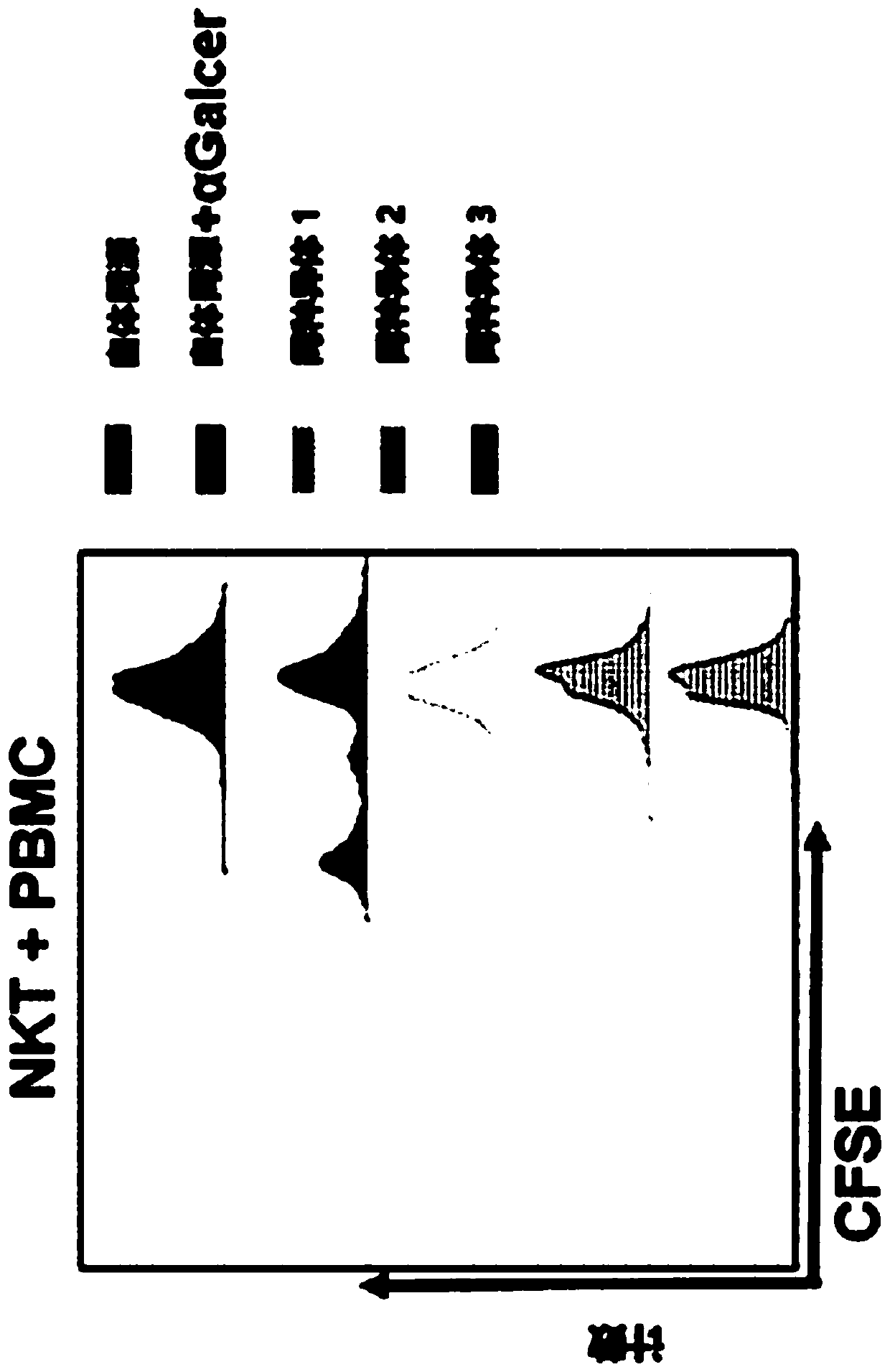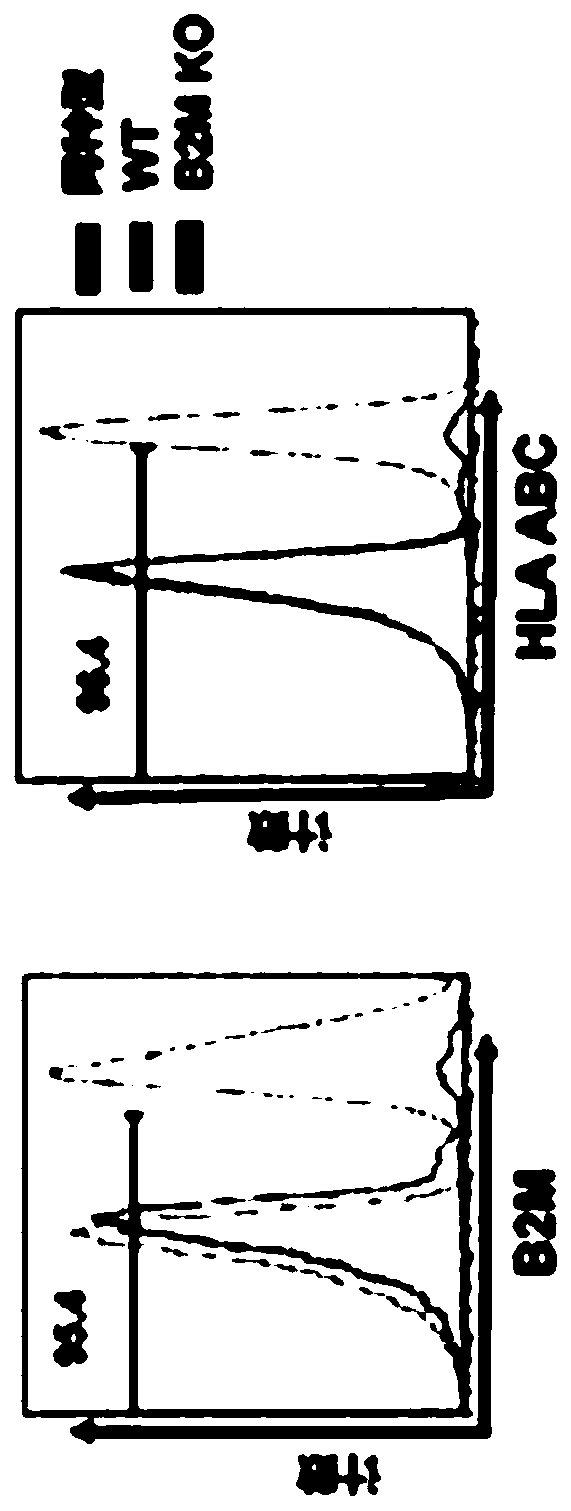CD1D-restricted NKT cells as a platform for off-the-shelf cancer immunotherapy
A kind of NKT cell and cell technology, applied in the fields of immunology and medicine, cell biology, molecular biology, can solve the problem of donor cell killing and so on
- Summary
- Abstract
- Description
- Claims
- Application Information
AI Technical Summary
Problems solved by technology
Method used
Image
Examples
Embodiment 1
[0093] Generation of tumor-specific and generally tolerable NKT cells from healthy donors for off-the-shelf cancer immunotherapy
[0094] Screen healthy donors to select candidates with highly functional NKTs.
[0095] Since NKT cell frequencies in human PBMCs vary from less than 0.01% to greater than 1%, we first analyzed NKT cell frequencies in PBMCs isolated from prospective healthy donors according to our IRB-approved protocol. Next, we expanded NKT in culture for 12 days using a protocol developed in our laboratory and quantified their rate of expansion and the expression of key surface markers related to functional potential: CD62L, CD4, and PD1. We characterized 12 healthy donors. At least 3 donors (#6, 7, 8) had very high NKT cell expansion potential with good CD62L retention and low PD1 expression (Table 1).
[0096]
[0097]
[0098] Test for alloreactive NKT cells.
[0099] Since NKTs are restricted by monotype CD1d, they are not expected to respond to ...
Embodiment 2
[0138] Generation of tumor-specific and generally resistant cells other than NKT cells from healthy donors for off-the-shelf cancer immunotherapy
[0139] In certain embodiments, cells other than NKT cells are manipulated to have reduced expression of endogenous B2M and / or Ii. Such cells may be any immune cells other than NKT cells, such as T cells, gamma / delta T cells, mucosa-associated invariant T (MAIT) cells, NK cells, innate lymphoid cells (ILCs) or mixtures thereof. In some embodiments, a mixture of NKT cells and one or more immune cells other than NKT cells is used in the compositions and methods encompassed by the present disclosure.
[0140] Non-NKT cells can be manipulated to have reduced endogenous B2M and / or Ii expression by standard methods in the art, such as targeting the expression of B2M genes using one or more agents, including nucleic acids such as shRNA or CRISPR guide RNA. Other methods include at least morpholino, siRNA, S-DNA, TALENs, ZFNs, etc.
[014...
Embodiment 3
[0144] Generation of tumor-specific and tolerogenic NKT and other cells from healthy donors by targeting MHC class II-associated invariant chain (Ii) for off-the-shelf cancer immunotherapy
[0145] In some embodiments, cells used instead (or in addition) to reduce expression of B2M and methods of using same and / or cells have reduced expression of MHC class II-associated invariant chain (Ii). These cells can be used to replace cells with reduced endogenous B2M expression. In some cases, the same cell has reduced expression of B2M and Ii, and in some cases, a mixture of cells with reduced endogenous B2M expression or reduced endogenous Ii expression, respectively, is used. In cases where the same cell has reduced expression of endogenous B2M and endogenous Ii, the same type of reagents can be used to target their respective reduced expression. For example, in some cases, both B2M and Ii were targeted by shRNA to reduce their expression, or in other cases, both B2M and Ii were t...
PUM
 Login to View More
Login to View More Abstract
Description
Claims
Application Information
 Login to View More
Login to View More - R&D
- Intellectual Property
- Life Sciences
- Materials
- Tech Scout
- Unparalleled Data Quality
- Higher Quality Content
- 60% Fewer Hallucinations
Browse by: Latest US Patents, China's latest patents, Technical Efficacy Thesaurus, Application Domain, Technology Topic, Popular Technical Reports.
© 2025 PatSnap. All rights reserved.Legal|Privacy policy|Modern Slavery Act Transparency Statement|Sitemap|About US| Contact US: help@patsnap.com



